Istrian Landscape and Climate
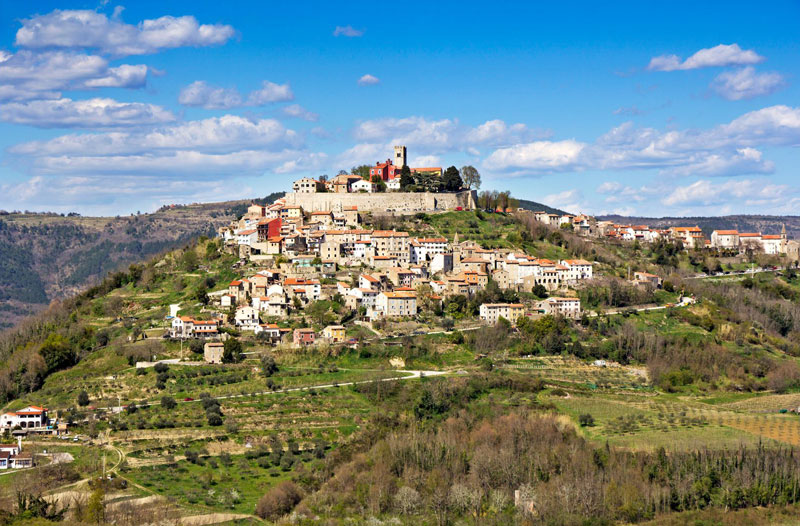
Location, Climate and Impact on Wine Production
Istria’s wine journey is intricately woven with its strategic position in a warm climate zone, nestled within the embrace of Western air currents. This advantageous location, perched on the northern fringes of the Adriatic Sea, plays a pivotal role in shaping the region’s unique wine offerings.
The western and northwest influences, carried by the Atlantic winds, infuse Istria with warmth and moisture, nurturing the vineyards that thrive under its care. As a transition zone between the Mediterranean and Eurasian continents, Istria benefits from the mitigating effects of the sea, tempering the harshness of North African dryness with its embrace.
Winters in Istria are mostly mild and wet, thanks to the moisture-laden air originating from the Mediterranean and the Adriatic Sea.
Conversely, summers unfold with sultry heat, painting the landscape with a spectrum of flavours waiting to be captured in each grape.
However, the pendulum swings both ways. The continental parts of Europe contribute their icy exhalations, swooping down from the Alps, often bringing frost and plummeting temperatures. Higher altitudes in Istria bear the brunt of this chilly embrace, receiving more precipitation than their lower-lying counterparts.
Altitude matters
Topography also has its say in Istria’s meteorological story.
The hilly northeast, welcoming southwest-bound moisture, emerges as the rainiest pocket, while the west coast and south receive the least rainfall. A delicate dance of precipitation distribution unfolds throughout the year, with winter’s end and early spring and summer reigning as the dry interludes.
Despite the region’s average humidity, this unpredictability can sometimes introduce the spectre of drought, amplifying the stakes for viticulturists. The western coastline, with its meagre precipitation, faces heightened vulnerability to drought, compounded by up to three months of scorching temperatures.
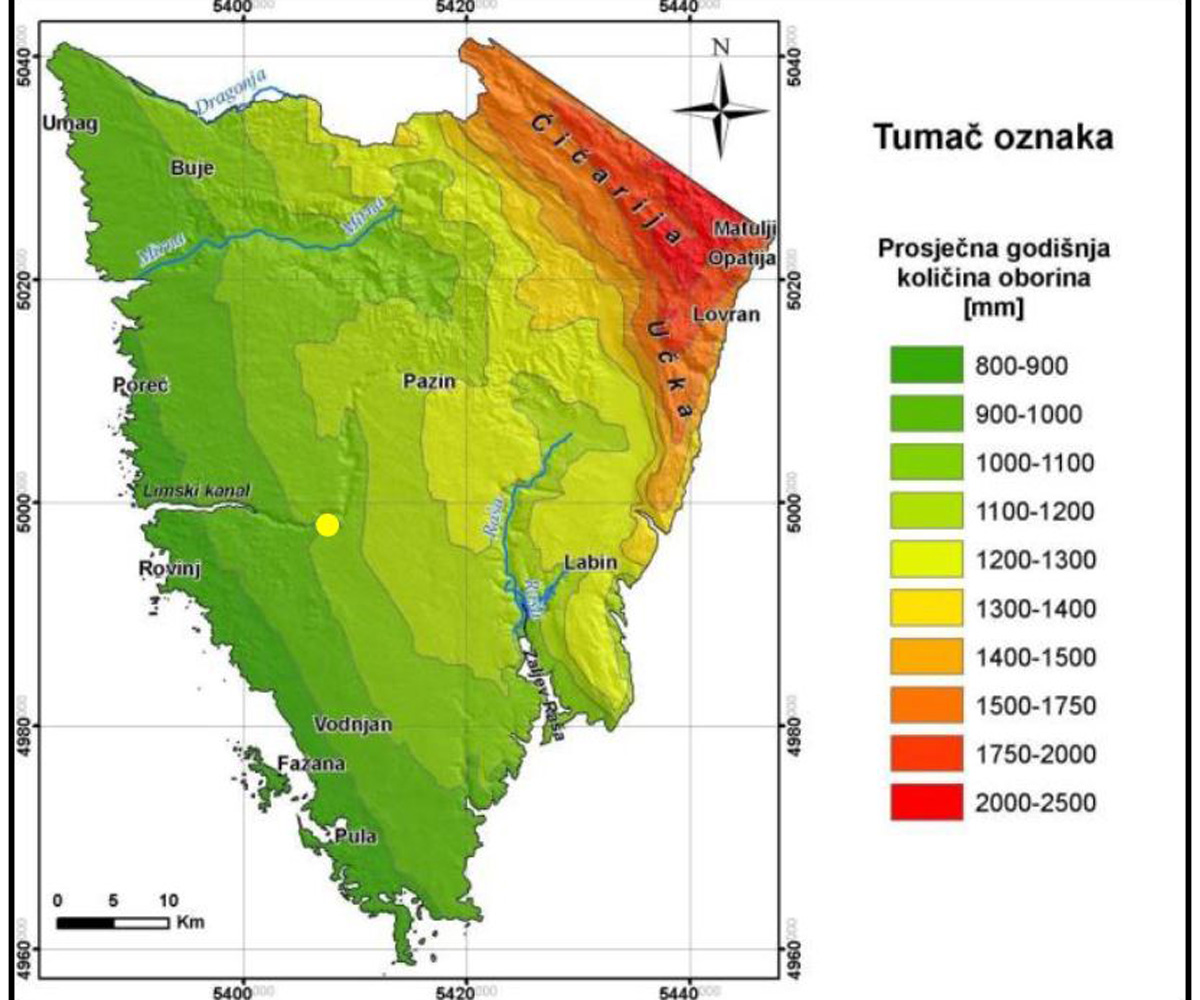
Importance of Winds
Nature’s orchestra in Istria includes its winds. The prevailing breezes from the north (Bura), and southeast (Jugo) mark the rhythm of the seasons. Winter’s storms, often due to Adriatic air pressure fluctuations, add a dramatic crescendo to the composition.
The coastal ballet of air circulation takes centre stage during summer, with a refreshing daytime mistral blowing from the sea and a nocturnal burin, flowing opposite, as the land cools more than the sea.
Through this intricate dance climate influences, Istria’s winemakers skillfully choreograph their vines’ growth. The region’s terroir, sculpted by these natural forces, enriches its grapes with the necessary balance and unique character that define Istrian wines. As the sun-drenched landscape and the caress of the Adriatic breeze influence each cluster, they imprint the wines with a narrative that whispers of the land’s bounty, waiting to be uncorked and savoured by enthusiasts across the globe.
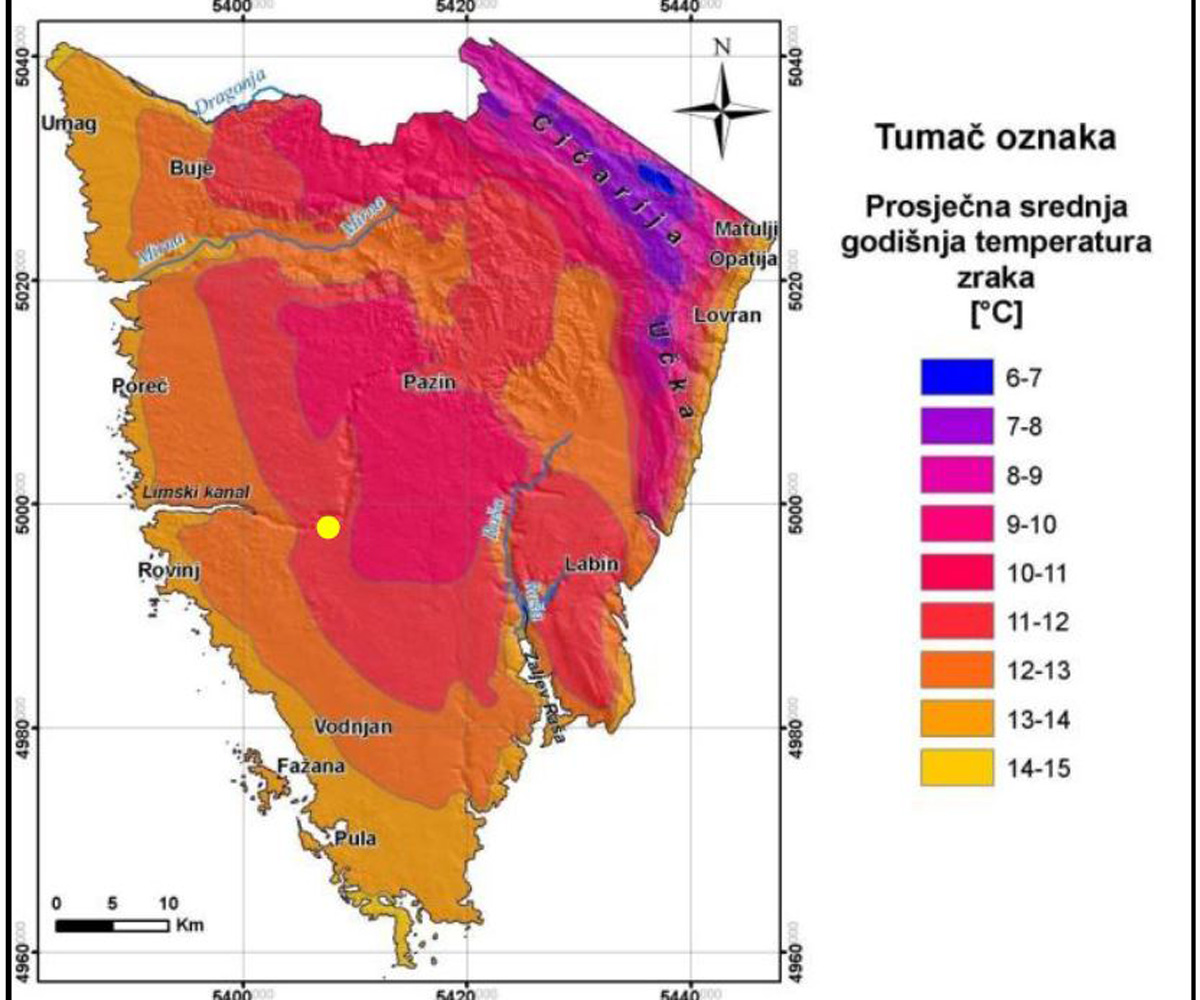
Istrian diverse terroir
Among the treasures that Istria bestows upon its winemakers, the soil stands as a foundational gift, its diversity painting a vivid palette of potential. The very ground on which the vines thrive reflects the region’s geological history, with each soil type possessing a distinct personality that influences the wines born from it.
Most significant Istrian vineyards are grown on red, white, or gray soil.
White Istria (Terre Bianche)
White Istria unfurls before us as the Učka and Ćićarija mountain massifs extend their arms from the North and Northeast. Pockets of high viticultural significance are scattered across central, northern, and northwestern Istria. The moniker “White Istria” arises from the bright and bare surfaces of the stony terrain, scantly plant-covered, where the soil’s untamed character nurtures unique expressions of the grapevine.
Gray Istria
Venture further, and you’ll encounter Gray Istria, a realm defined by the gray flysch, a marl, sandstone, and softer limestone composition. This central Istrian expanse, draped in understated gray, provides the backdrop for a vine dance that yields wines of depth and character.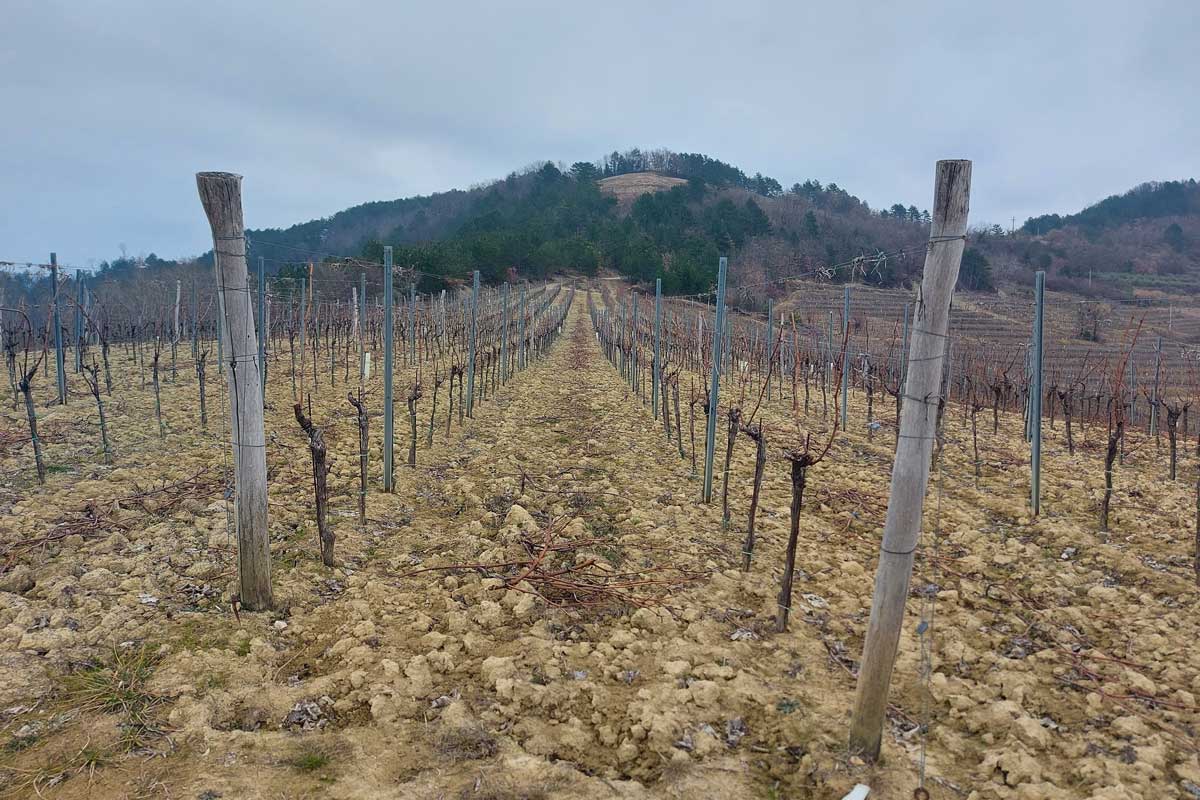
Red Istria (Terra Rossa)
On Istria’s western coast, where sun and sea converge, lies Red Istria or “terra rossa.” This iconic soil, with its distinctive red-brown or yellow-red hue, embodies the essence of the Mediterranean climate. A blend of clay, sand, and dust particles, Red Istria cradles life with its unique ability to absorb and hold water—a lifeline for plants during the arid embrace of summer. Iron and aluminium oxides lend the soil its rich red colour, crafting a striking visual reminder of its mineral-rich heritage.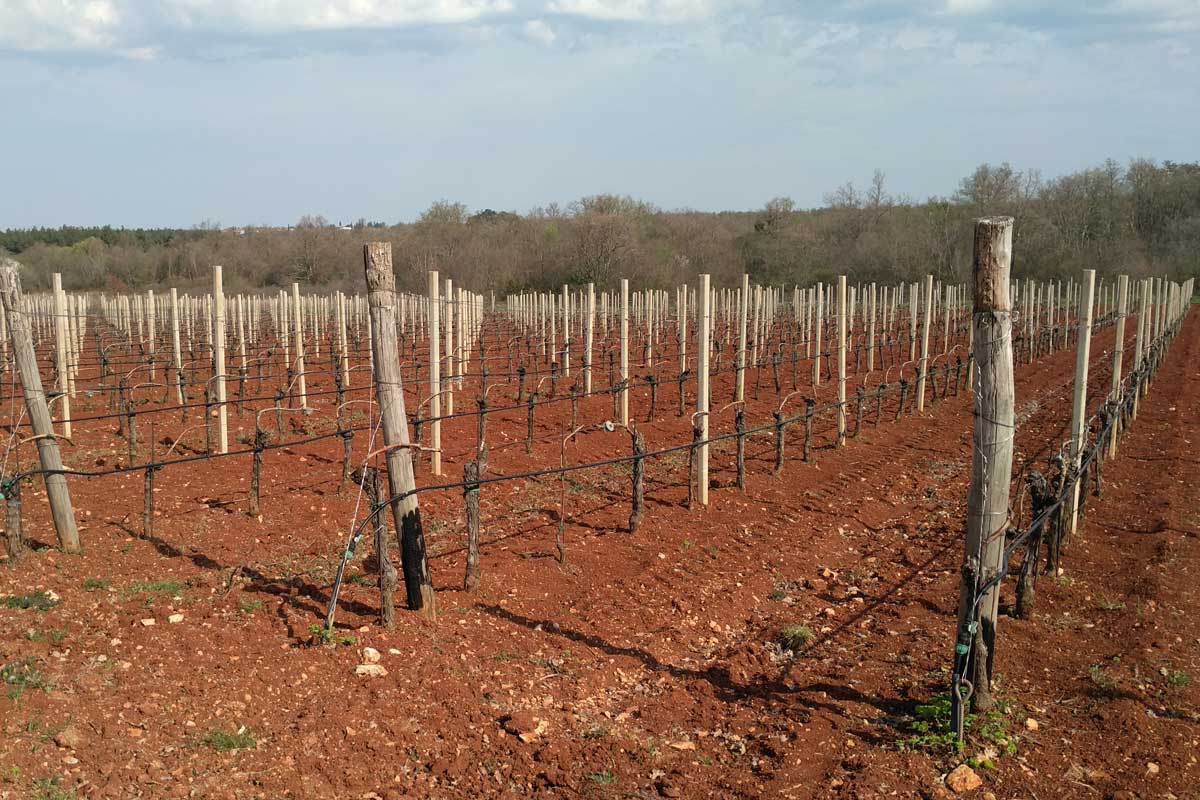
A Tapestry of Flavors
In Brtonigla, a small town perched on a hill, this terroir mosaic finds its harmonious convergence within an area scarcely larger than 33 square kilometres (20 square miles). The four soil types—white, red, gray, and black—create an artist’s palette here, and the indigenous Istrian Malvasia grape takes centre stage. Rooted in Istrian soil since the 13th century, this grape finds its home on these diverse plots, each contributing its unique imprint to the final composition.
From the intricate marl of Gray Istria to the inviting embrace of Red Istria’s terra rossa and the sunlit stones of White Istria, including the black fertile soil rich in humus, the terroir of Istria is a canvas on which nature paints its masterpiece.
Here, the vines reach deep into the earth, drawing forth the essence of their surroundings to craft wines that resonate with the very soul of the land.
General characteristics of Istrian wine according to soil type
In the heart of Istria’s rolling landscapes and under the nurturing embrace of its diverse soils, a symphony of flavours and characteristics emerges in its wines. The meticulous interplay between natural factors – the sun-kissed slopes, the caressing winds, and the soil’s nurturing embrace – paints a tapestry of uniqueness that sets Istrian wines apart on the global stage.
Crisp Elegance of White Istria
From the vineyard sites of White Istria, a crisp elegance graces the white wines that find their home here.
Istrian Malvasia, in particular, expresses an aromatic profile adorned with zesty citrus, green apple, and minerality notes. Such mineral expression is less common with Malvasia Istriana from other soil types.
Structurally, white and red wines, tend to have better definition and clarity, infused with refreshing acidity in balance with the body and overall “elegance” appearance.
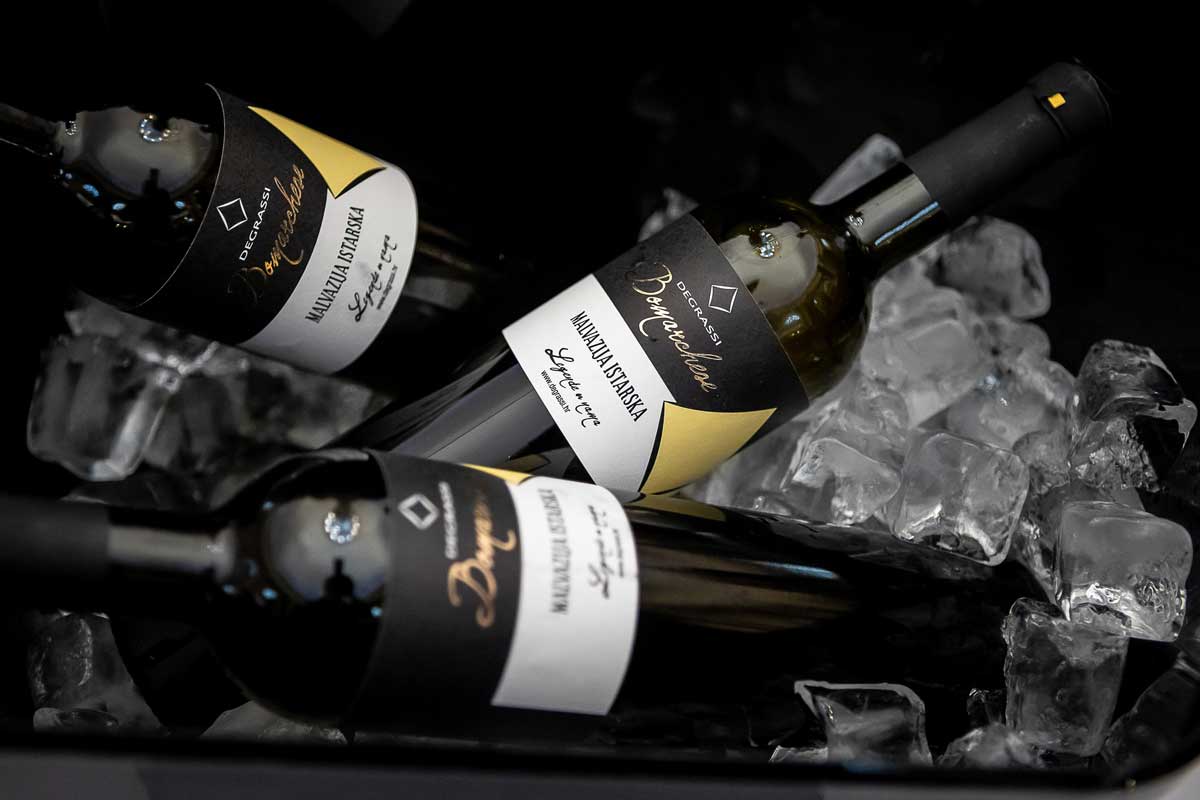
Depth and Richness of Red Istria
In the embrace of Red Istria’s terra rossa, the wines take on an alluring intensity, a mirror to the rich, iron-laden soil from which they arise.
The clay’s water-retention prowess offers respite to the vines during the sweltering summer, producing wines embodying both power and elegance. Istrian reds, such as Teran and Refošk, captivate with their robust red fruit character, accented by hints of spice and a compelling undercurrent of earthiness.
This terroir crafts full-bodied and harmoniously balanced wines, reflecting the dichotomy of the Istrian landscape itself.
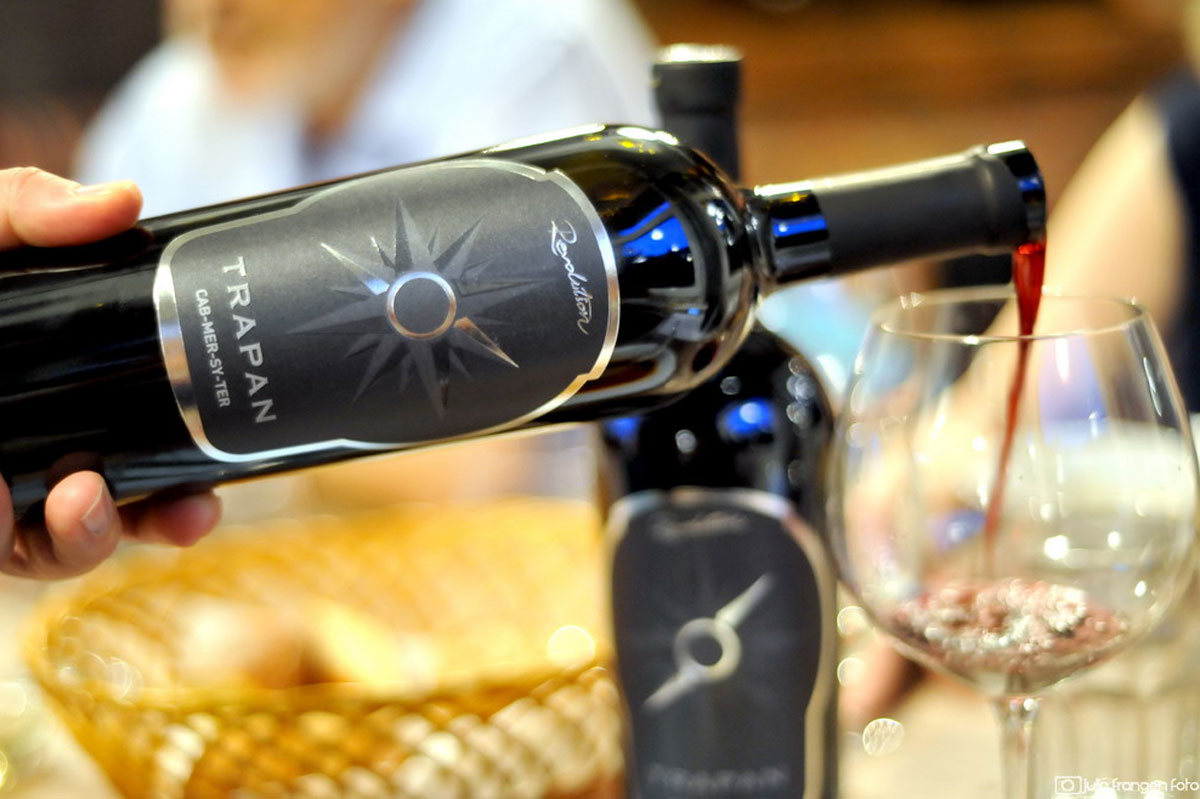
Conclusion
In conclusion, Istria’s landscape and climate intertwine to shape its unique wines. Its strategic location in a warm climate zone, influenced by Mediterranean, sub-Mediterranean, and continental climates, creates a dynamic environment.
The interaction of western winds and the tempering effects of the Adriatic Sea nurtures thriving vineyards, while continental cold fronts bring challenges. Topography plays a role, with varied rainfall across the region leading to occasional drought concerns.
Winds add rhythm to Istria’s climate, influencing the growth of vines. Diverse soils, from white to gray to red, further contribute to the wines’ character. Generally, white Istria produces elegant white wines like Istrian Malvasia, while Red Istria yields intense reds like Teran and Refošk.
Ultimately, Istrian wines are a harmonious expression of the region’s landscape and climate. They reflect the terroir, from stony slopes to Adriatic influences, standing out globally as a testament to nature’s artistry and the peninsula’s unique spirit.




















